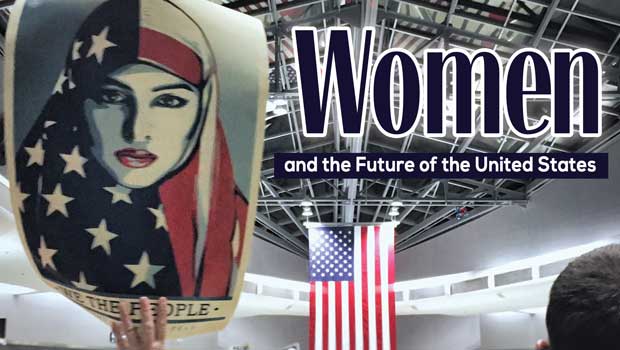There has been perhaps no more celebrated an icon of immigrants’ dreams and aspirations of freedom than the Statue of Liberty. Crafted by the French sculptor Frederic Auguste Bartholdi and financed by the government of France, the imposing depiction of Libertas, the Roman goddess of liberty, was dedicated on Ellis Island, off the shores of Manhattan, on October 28, 1886. The inscription on Lady Liberty reads, “Give me your tired, your poor, your huddled masses yearning to breathe free, the wretched refuse of your teeming shore…” As the statue was immortalized in prose, poetry, and the hearts of countless immigrants over the many decades, a tad more than 50 percent of the U.S. population — women — continue to yearn and fight for their freedom and equality to reach full fruition.
Perceptions of women must be recalibrated in the minds of men so that they realize the honor and respect due to the female gender. When men deny women their rights, ordained by Allah SWT, they have doomed themselves and society to imbalance and defect
The first women’s rights convention in the United States was the Seneca Falls Convention held in western New York state on July 19-20, 1848. It was organized by local Quaker women in conjunction with Elizabeth Stanton, a women’s rights activist, and Lucretia Mott, a Quaker from Philadelphia. At the time of the historic convention, women were generally not allowed to speak in public meetings or religious gatherings or vote; in various states, only women who were married were permitted to own property, but they were not allowed to manage it except when their spouse was incapacitated. Lucretia Mott was a true maverick and reformer, an articulate and outspoken advocate for the rights of women during an age when women were politically powerless and constrained to an inferior social status. Attendees at the Seneca Falls Convention focused on issues such as denial of property rights, inequality of opportunities in education and employment, being deprived of the right to vote, denial of the right to participate and be represented in government, and other rights and privileges customarily granted to men.
Frederick Douglass, an advocate for social justice, abolitionist, and orator, was also a prominent supporter of women’s rights. He attended the convention and eloquently expressed, “In respect to political rights, we hold woman to be justly entitled to all we claim for men. We go further and express our conviction that all political rights which is expedient for men to exercise, it is equally so for women. And if that government only is just which governs of a woman, and if that government only is just which governs by the free consent of the governed, there can be no reason in the world for denying to woman the exercise of the elective franchise, or a hand in making and administering the law of the land.” Susan B. Anthony, a friend of Elizabeth Stanton, was an anti-slavery activist, leader in the temperance movement, and the primary leader of the Women’s Suffrage Movement. The sustained efforts of the Movement resulted in Congress passing the 19th Amendment to the U.S. Constitution in 1920, allowing women to vote in all American states.
While much progress has been made in granting women their full rights, more needs to be done. According to the U.S. Census Bureau, women constituted 50.8 percent of the U.S. population in 2017 and comprised approximately half of the workforce. Yet, roughly one in eight women in 2016 lived in poverty. Pew reports that 42 percent of working women say they have experienced some form of gender discrimination at work and roughly 22 percent report being sexually harassed in the workplace. As of 2018, White women were paid 77 cents for every dollar paid to White men, Black women were paid 61 cents, Native American women 58 cents, and Latinas 53 cents. In 2006, according to the World Economic Forum, the U.S. ranked third worldwide in economic gender equality; by 2016, the U.S. had dropped to 26th place. To understand that discrimination and negative attitudes toward women have consequences beyond economic status, consider that eight and a half million women each year are victims of domestic violence and three or more women are murdered by their partners each day.
There are many obstacles placed in front of women that account for the income and education gaps between males and females in this nation. El Hajj Malik Shabazz (Malcolm X) so astutely noted, “One thing that I became aware of in my traveling recently through Africa and the Middle East, in every country that you go to, usually the degree of progress can never be separated from the woman. If you are in country that’s progressive, the woman is progressive…But in every backward country you’ll find the women are backward, and in every country where education is not stressed it’s because the women don’t have education.”
Perceptions of women must be recalibrated in the minds of men so that they realize the honor and respect due to the female gender. When men deny women their rights, ordained by Allah SWT, and the opportunities to fulfill their greatest potential, they have doomed themselves and their society to imbalance and defect. In contrast, fully supporting the rights of women can bring light and grace to this nation.






